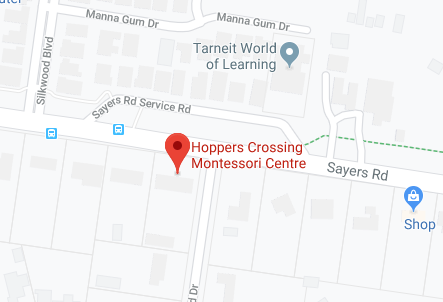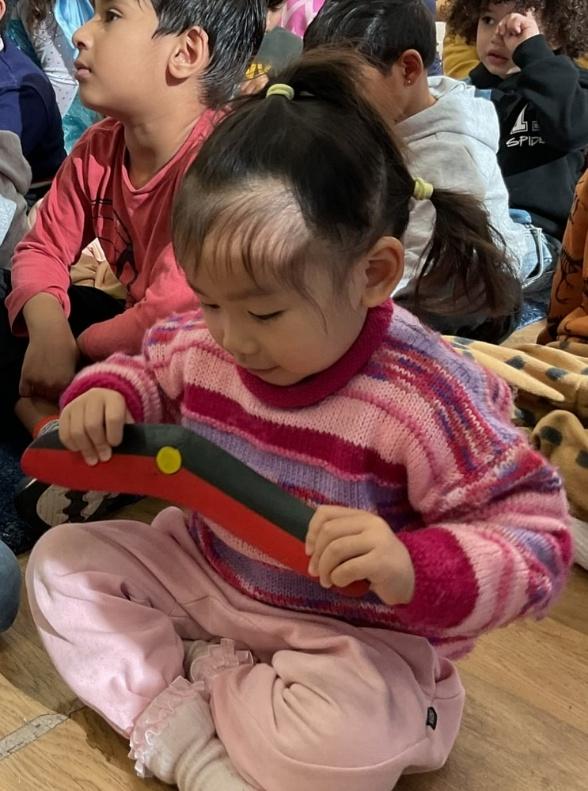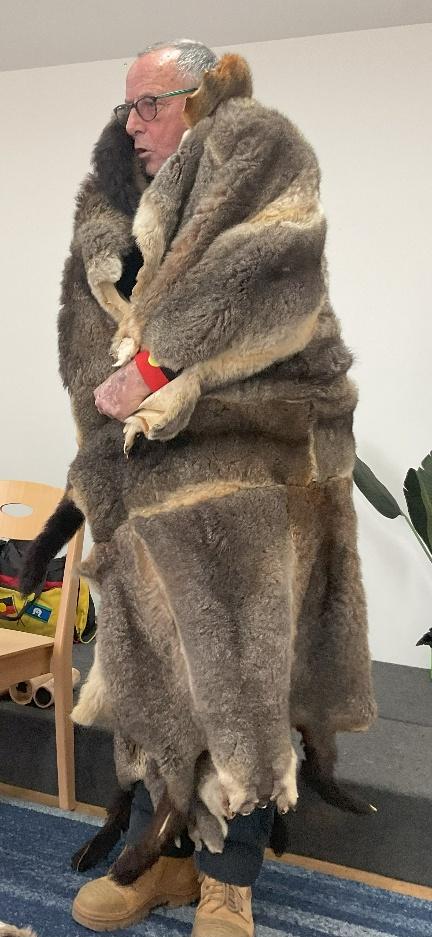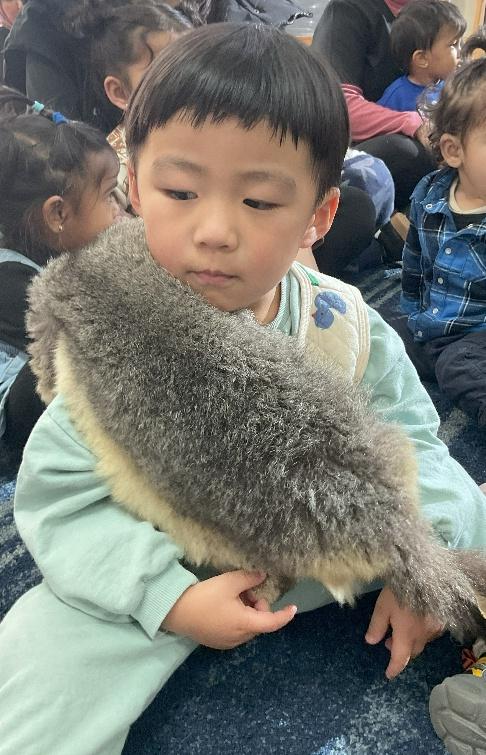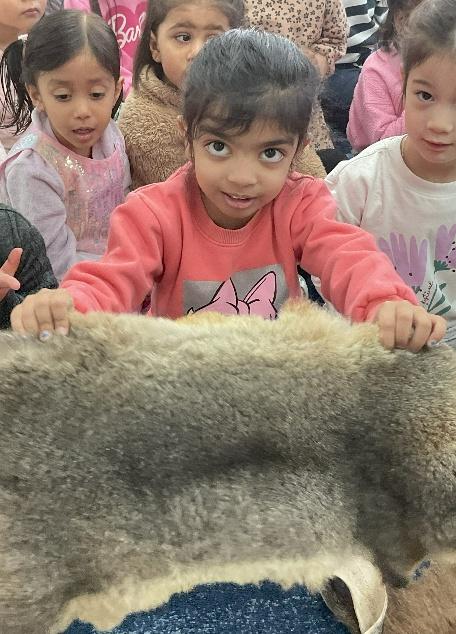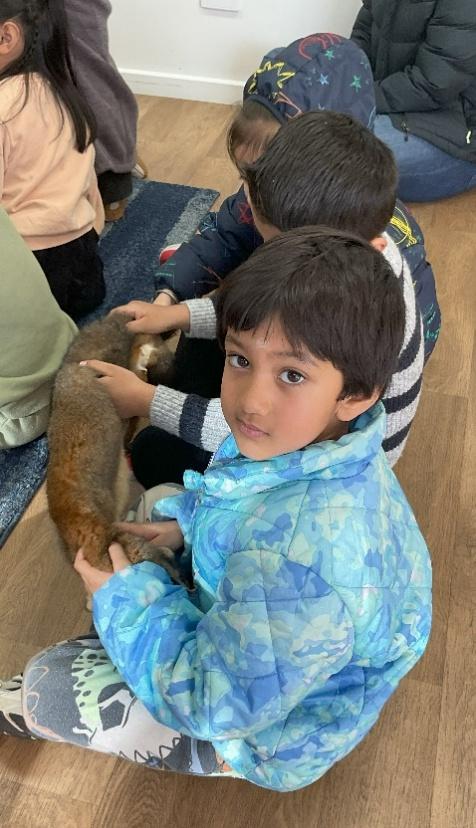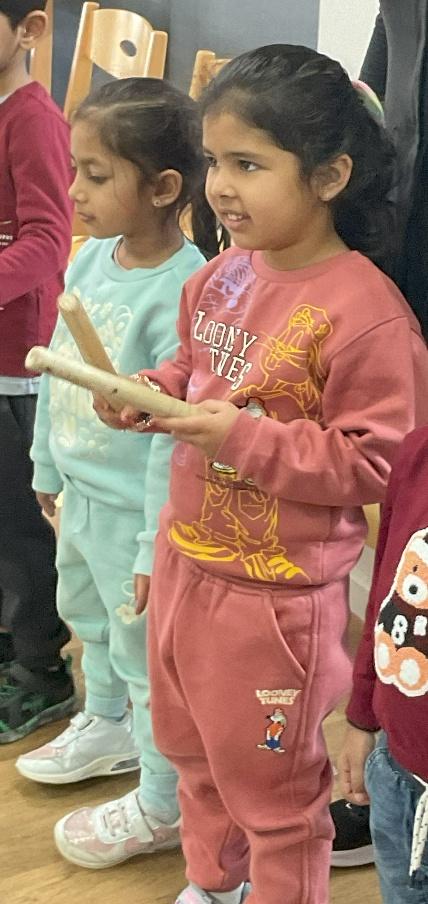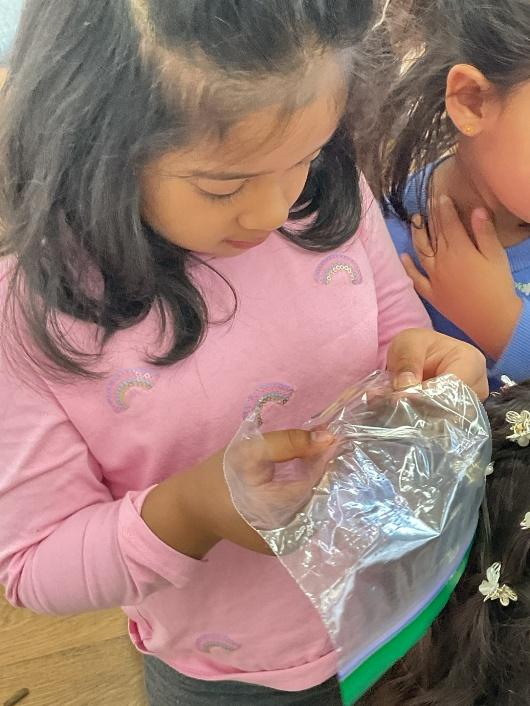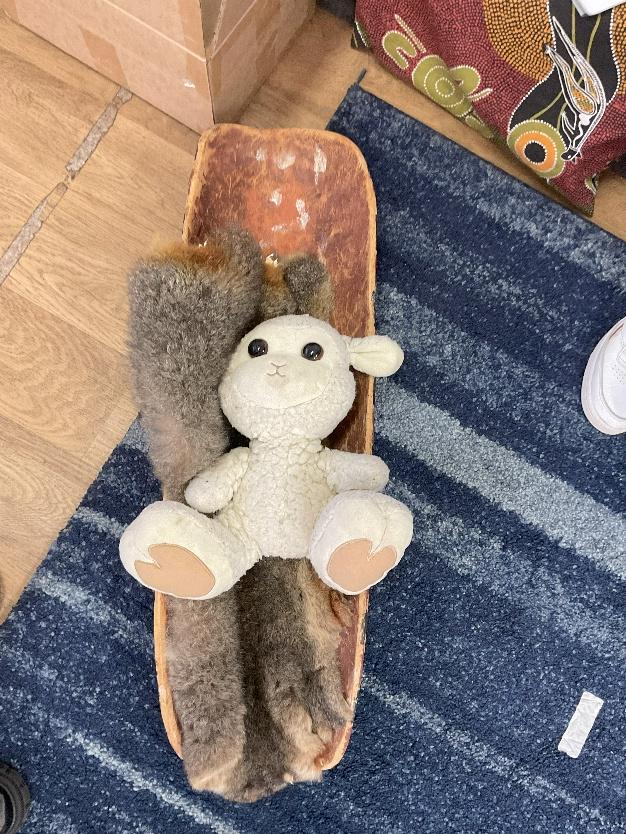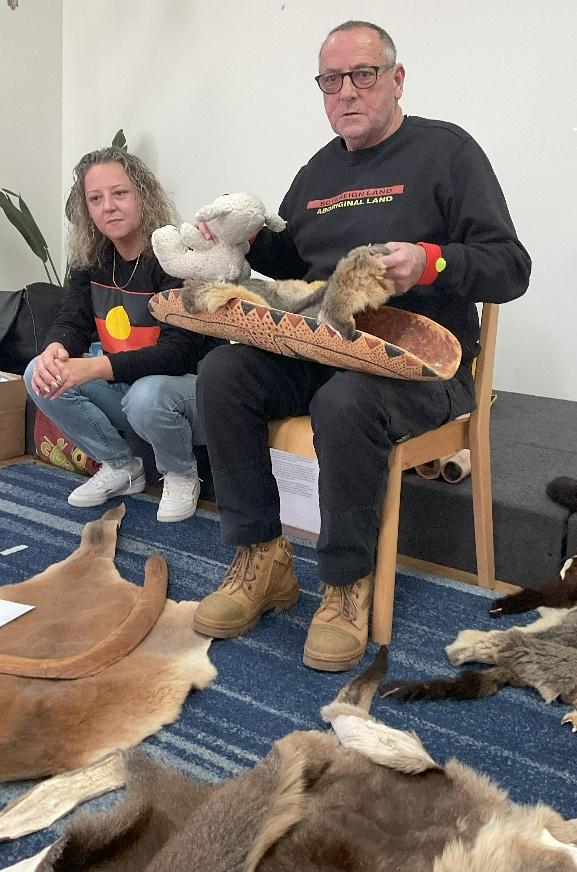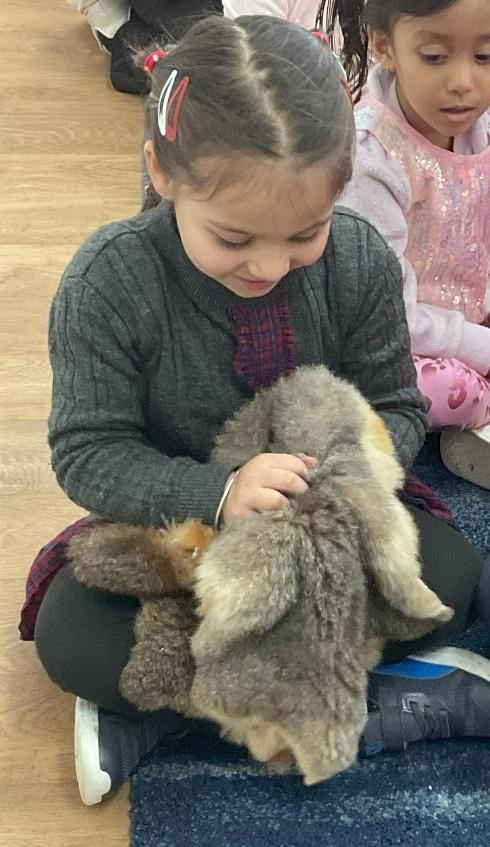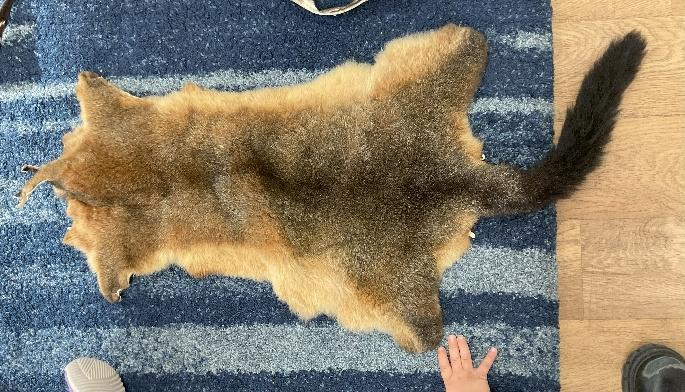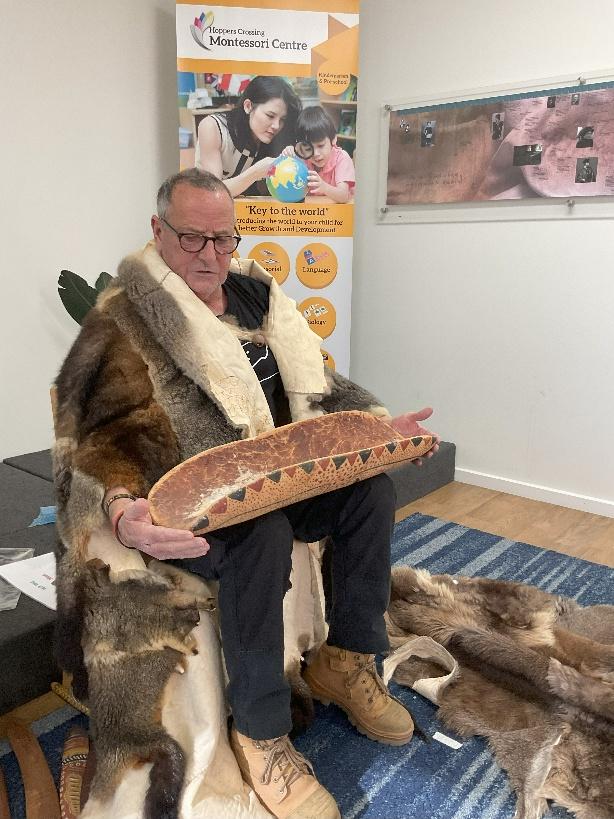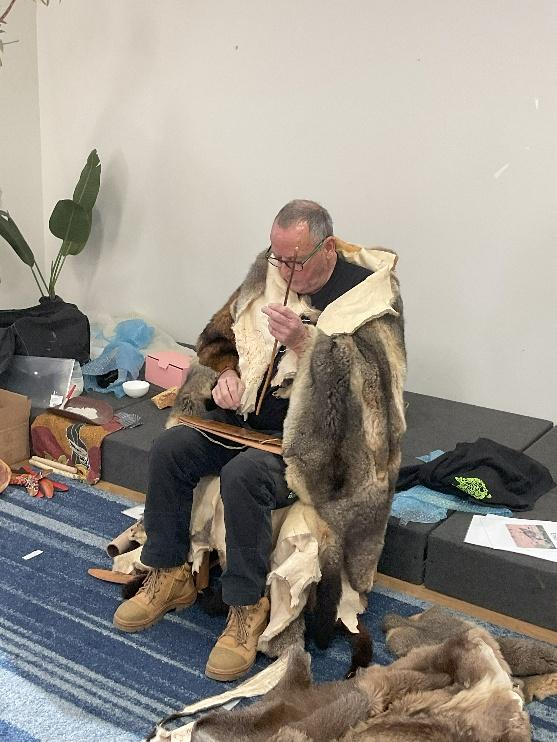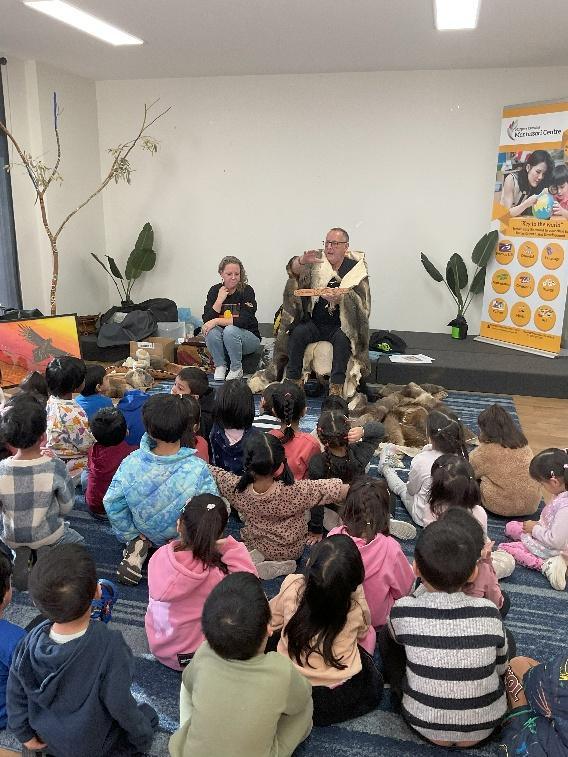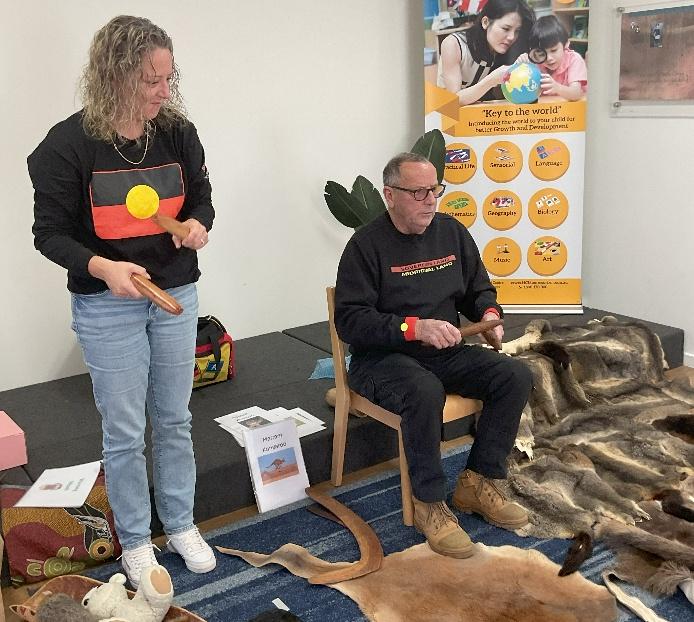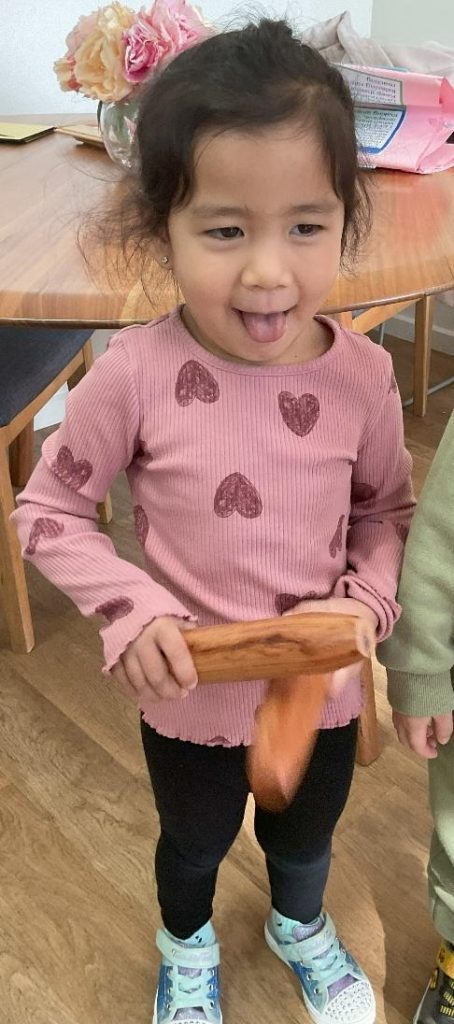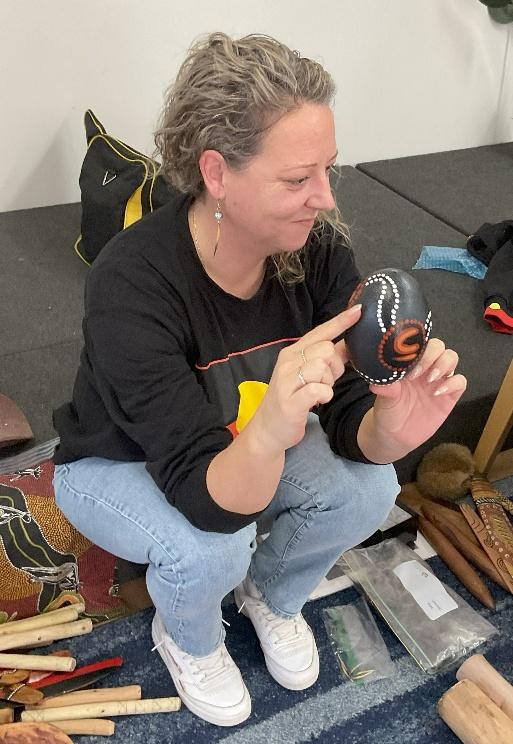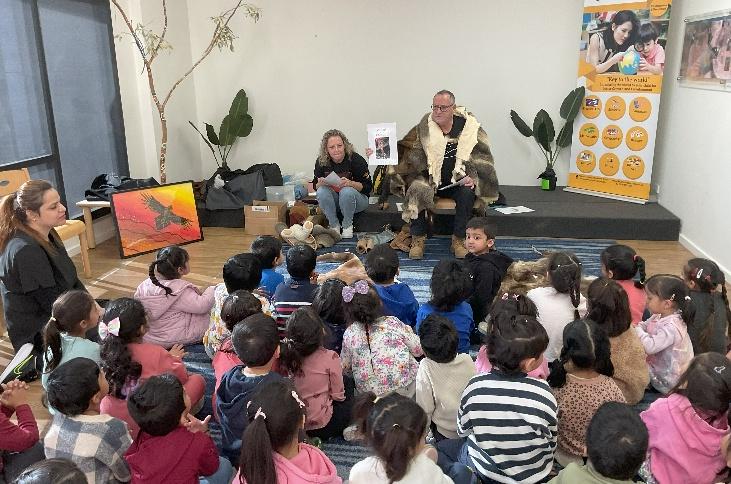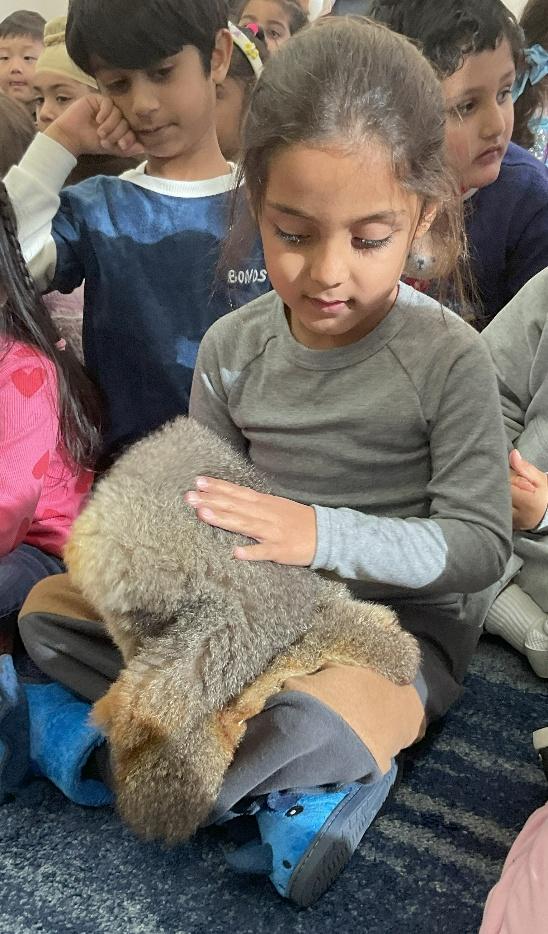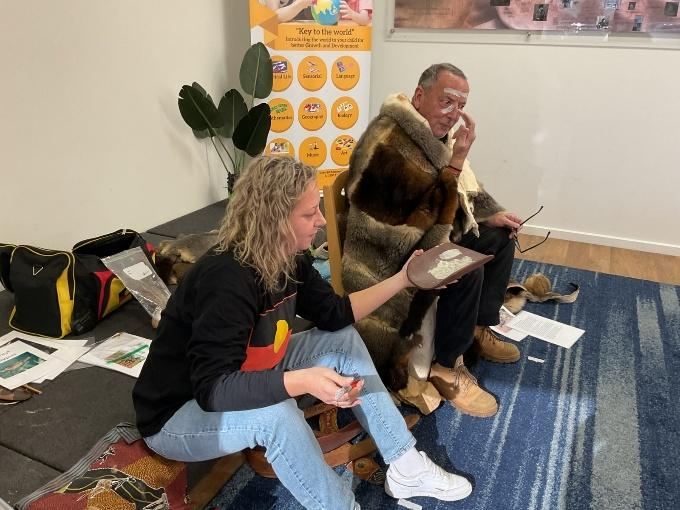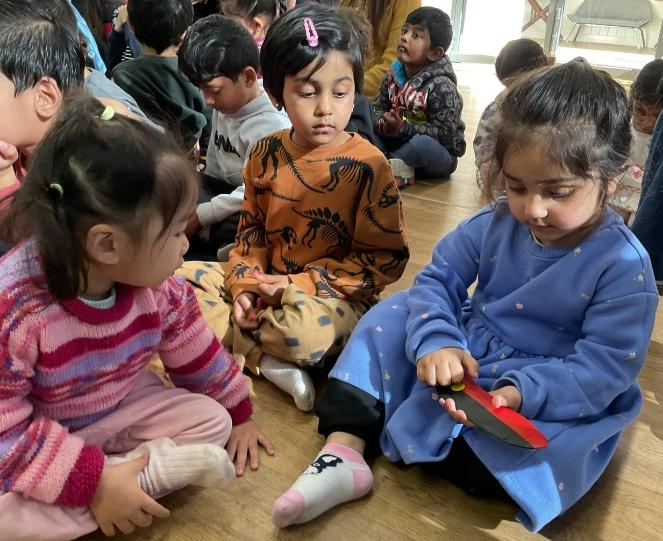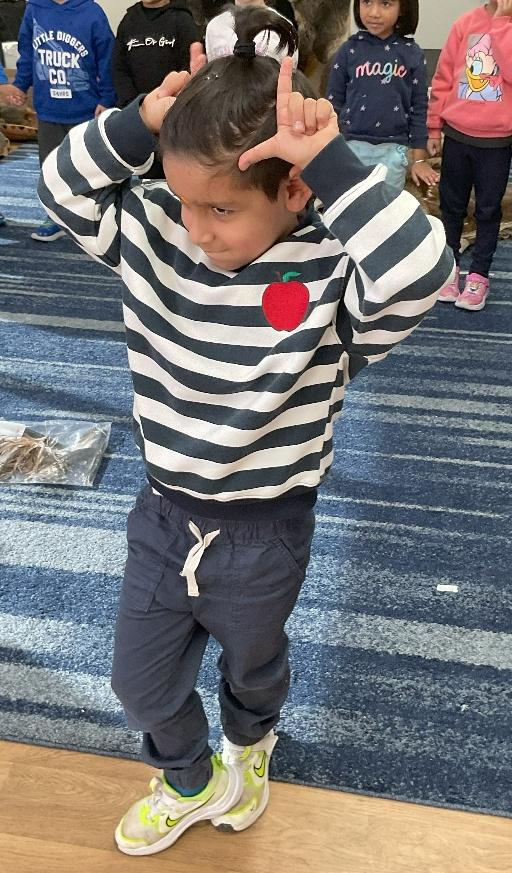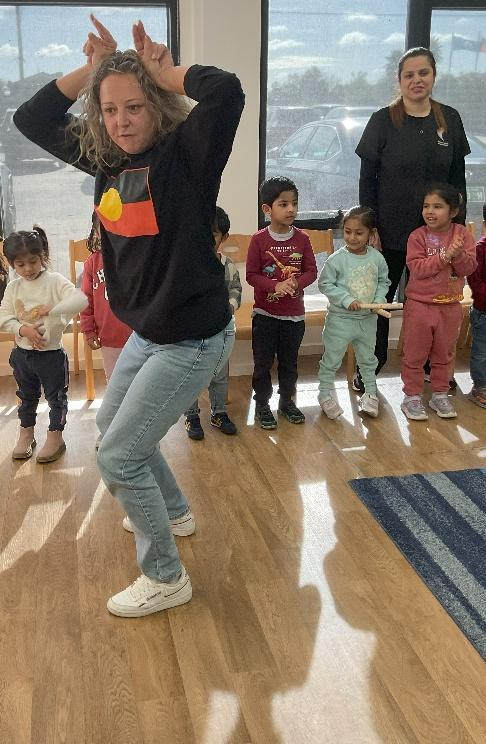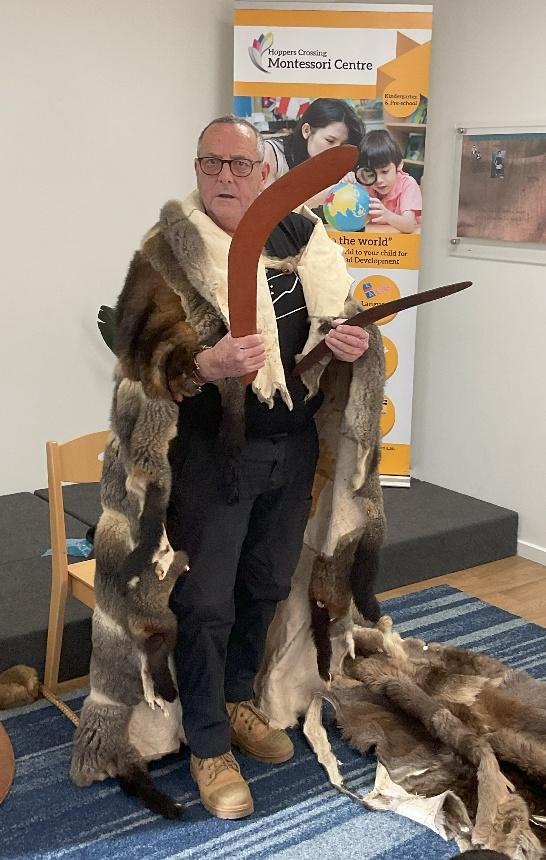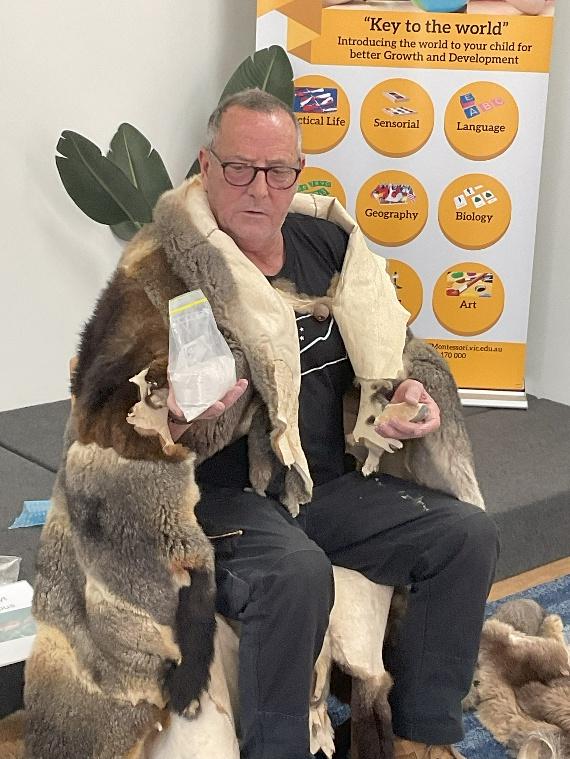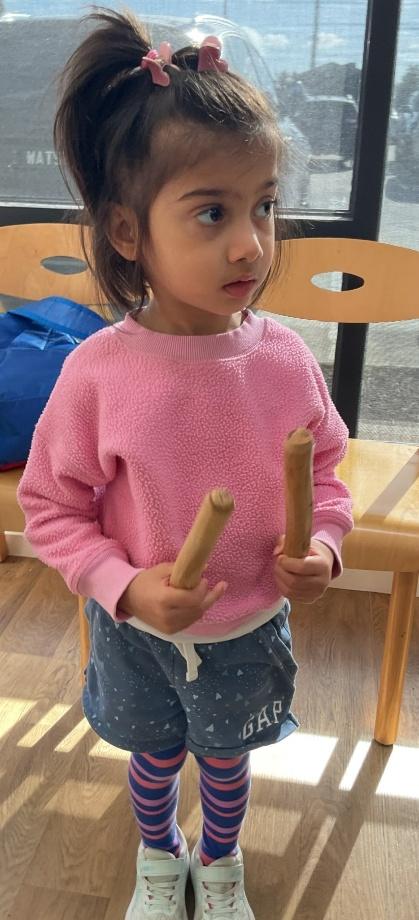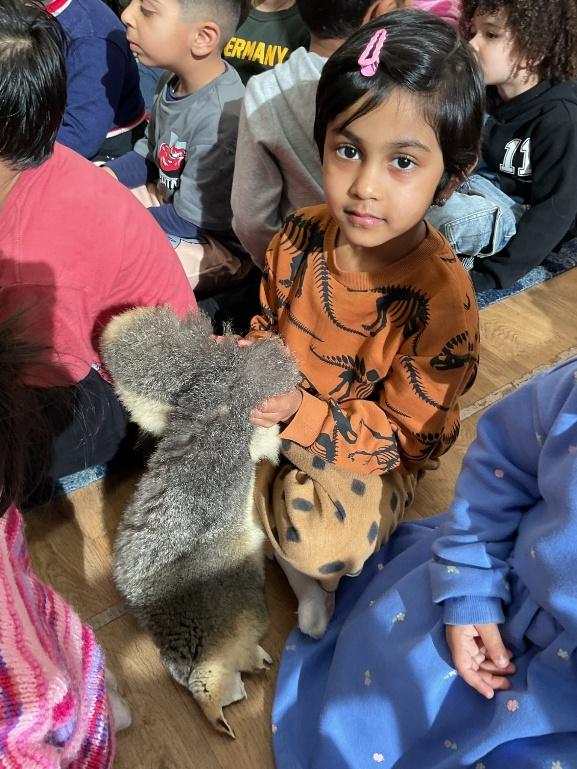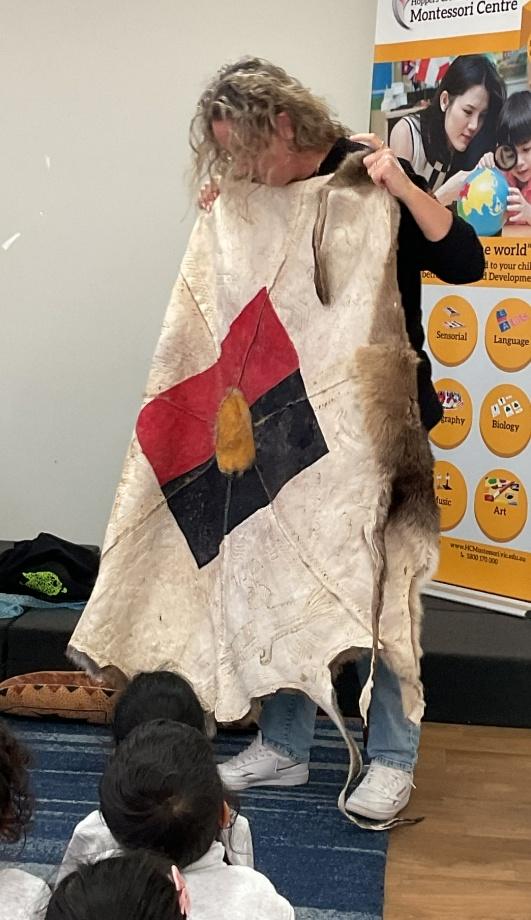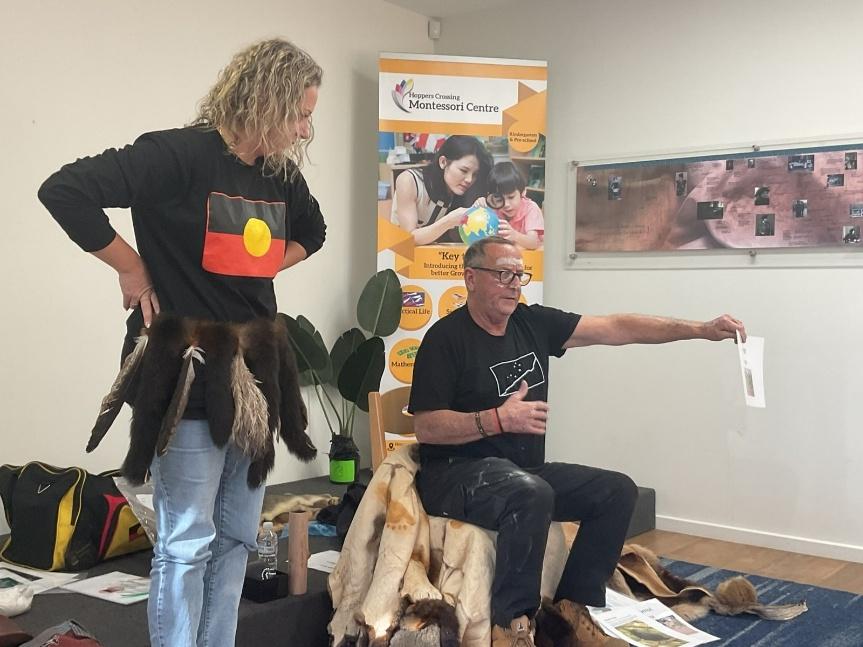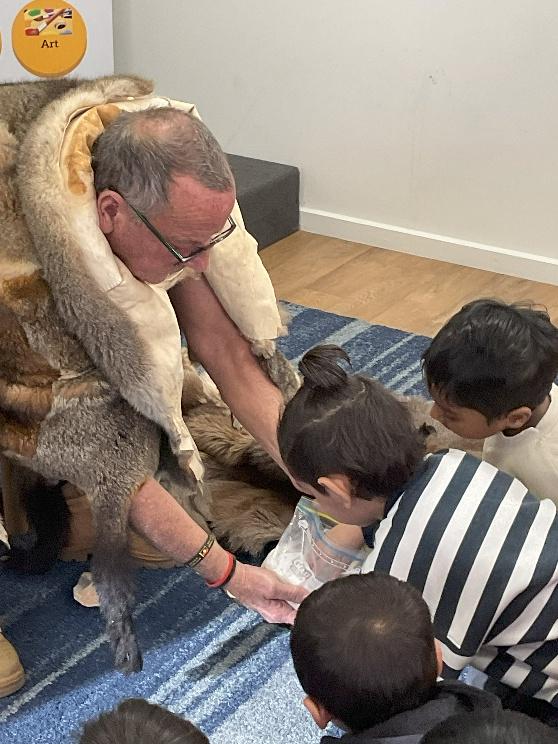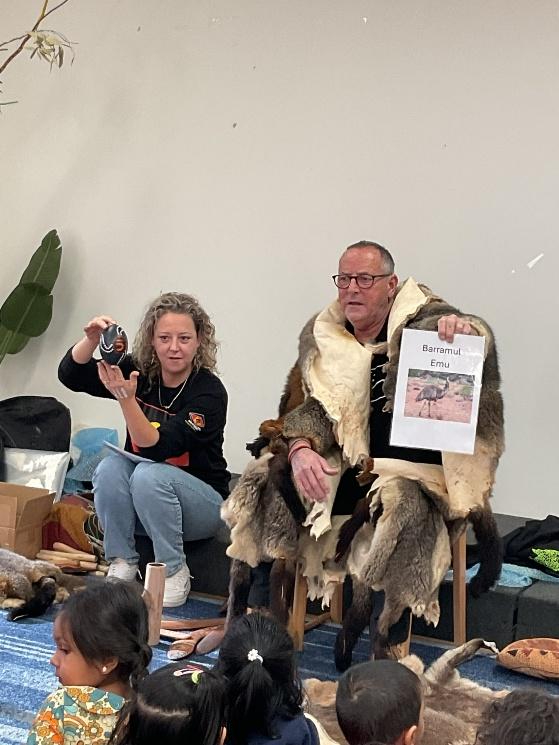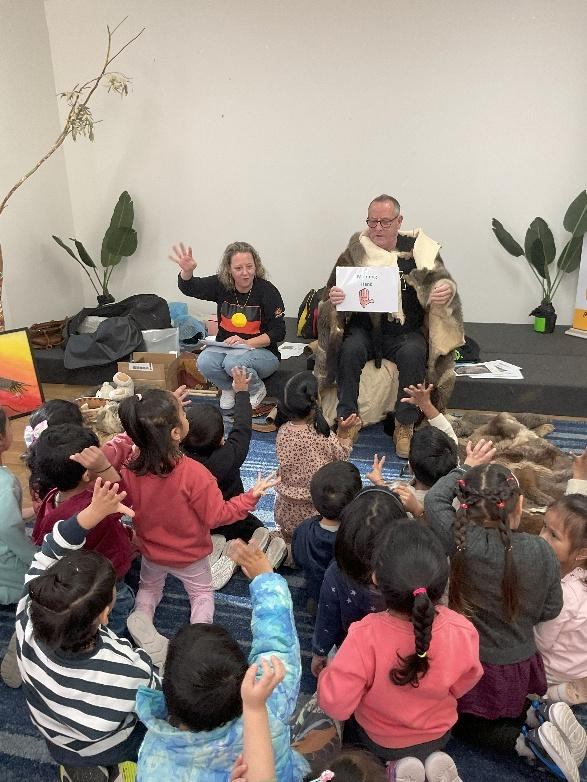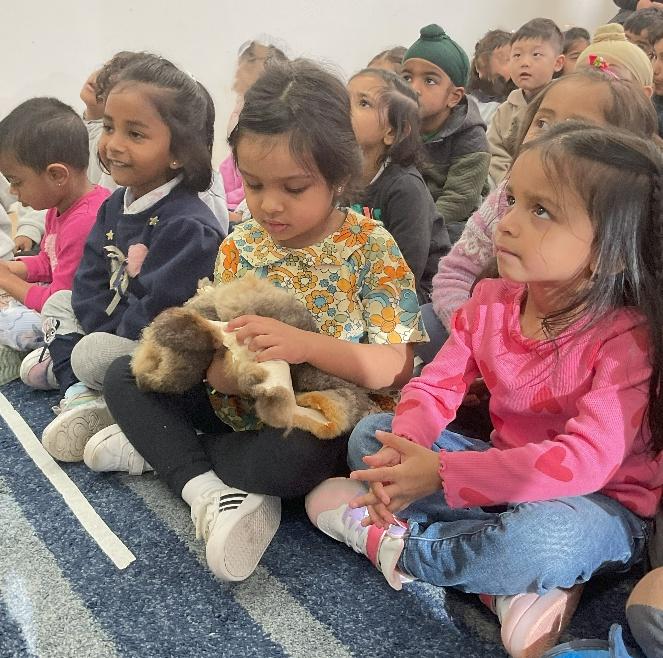This week, our Centre was honoured to welcome Uncle Rob, a respected Elder, for a very special First Nations incursion. It was a joyful, meaningful, and truly unforgettable experience for our children and educators.
From the moment Uncle Rob entered our learning space, the atmosphere shifted, it was as though the room itself leaned in to listen. The children were wide-eyed with curiosity and excitement, and eager to learn from the stories and wisdom he brought.
Uncle Rob introduced us to the Taungurung language, one of the five mobs of the Kulin Nation, whose Country stretches across central Victoria. He shared common body part names and animal names in Taungurung, helping us build respectful and meaningful connections to the local First Nations culture. The children were fascinated by the rhythm and sound of the words saying them out loud.
Language is a powerful connector for us humans. In Montessori education, we understand that children are naturally drawn to spoken and written language in their early years of life. This incursion allowed children to absorb vocabulary in a meaningful cultural context, tapping into their sensitive period for language obtainment in a deeply respectful and purposeful way for our young learners.
One of the most magical moments was learning the dance of Bunjil, the creator spirit represented as a majestic wedge tailed eagle. Uncle Rob’s daughter guided us through the movement and rhythm, telling the story of Bunjil through dance. We also learned traditional dances representing the Emu and the Red Kangaroo, two animals with deep spiritual and cultural significance for the First Nations People. As Uncles Rob’s daughter danced, the children moved with freedom and joy, embodying the creatures they were learning about.
Uncle Rob generously shared his Possum skin cloak, as well as Wallaby and Red Kangaroo skins, explaining their significance and how they are used as storytelling tools, clothing, and items of great cultural importance. He explained how the Kangaroo or Possum skin is traditionally gifted to a newborn baby, and with each passing birthday, an additional piece of skin is sewn onto it. Over time, these pieces come together to form a large, meaningful cloak that tells the story of the child’s life.
The children were in wonder as they gently explored the cultural materials that Uncle Rob brought along, their eyes wide with ponder as they touched the Possum skin cloak, Wallaby and Red Kangaroo skins, an Emu egg, Boomerangs, Echidna spikes, and a Coolamon used as a baby carrier. Some of the children were fascinated by the earrings worn by Uncle Rob’s daughter, which were made from echidna spikes. This tactile experience offered more than just excitement, it provided a sensorial connection with culture and heritage. In a Montessori environment, real, hands-on materials are essential for deep and meaningful learning. By engaging with these culturally significant artifacts, the children not only explored new textures and shapes, but also formed a respectful and lasting bond with First Nations knowledge and traditions.
We are deeply thankful to Uncle Rob and his daughter for sharing their culture and stories, with us. His visit helped the children, and our educators connect with Aboriginal knowledge and ways of being in an authentic.
